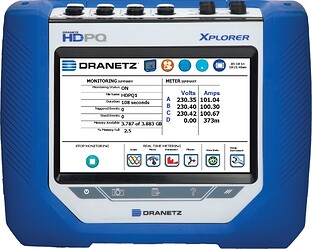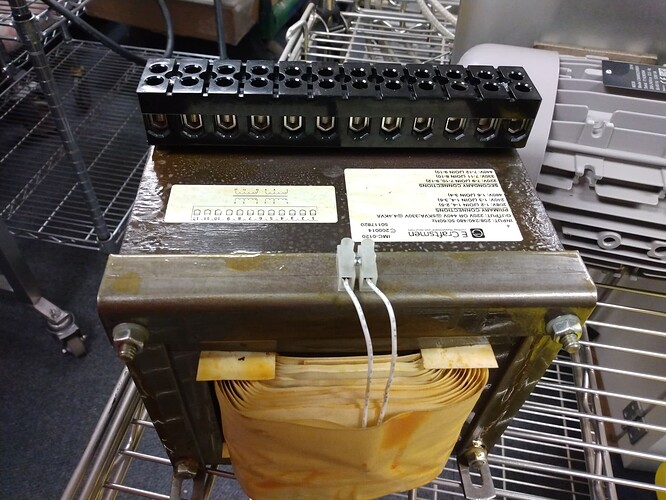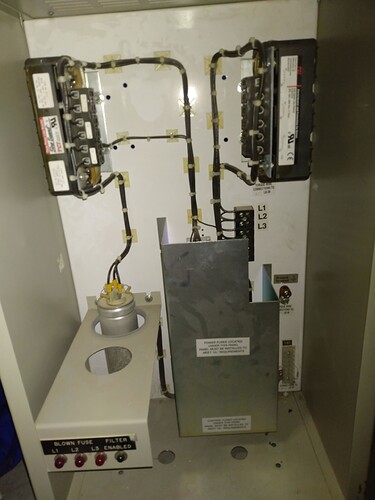Any electrician knows more than I do, so I’d take their word over mine.
@raghanded idk if this will help you make sense of harmonic filters but I randomly got a hair up my ass over this issue so I should have something to add soon.
Also bump.
It has to do with the start winding not liking reduced power
I sorta get the idea of what they’re doing but I’m still not sure of how to apply it in protecting my VFDs or if the one I have would be the right type.
I love this thread! Sorry @Franklin I don’t want your motor. Of all the control cabinet photos I’ve seen on here I’ve never seen reactors installed near VFDs. VFDs are the problem and reactors reduce the harmonics that VFD create on the rest of the electrical system.
In general it is good practice to install reactors on the line side of every VFD. They should be installed as close as possible to the VFD with no other devices, splices or taps between the reactor an the VFD. This protects everything else in the electrical system including other VFDs and the control devices that connect to them.
Load side reactors protect the motor windings. Motors on pumps, fans and other things where the torque of the motor is directly related to its speed don’t have as much of heating issue and you can get away with feeding a standard motor with a VFD for these purposes. Motors in centrifuges, conveyers, and such that require the same amount of torque regardless of the speed require the motor to be inverter duty or rated. Regardless of the motor that is used, load side reactors should be installed when the wiring between the motor and the drive is more than 100 ft.
@raghanded most electricians don’t have the correct equipment to do a proper power quality test. A low end tester starts at about 9k and a customer should expect to pay around 2 to 3k just to run the initial test and deepening on the complexity of the electrical system at least 2 to 3 times that to identify the problem if there is one. Some utility companies have the equipment to do this test at the service and will do it for free to ensure that they are not in violation of their IEEE standards. This would be a good starting point especially if your facility shares a primary transformer with other customers. In my experience very few power quality issues come from outside of the premises and are likely from VFD’s, UPSs, LED lights, and computers installed in the facility.
@cyclopath this info might be helpful if you dig deeper into rebuilding your control cabinets. I think I recall you saying some of the motors of centrifuges past didn’t like the agitate feature.
I’d probably destroy my oscilloscope if I tried to measure the waveform coming from my utility, wouldn’t i?
As long as it can handle the service voltage it would be fine. The biggest advantage to using a power quality meter is that it records voltage and current on all channels 1 or more times per cycle over the period of at least 24 hours. This info can help with determining patterns with problems and correlate those patterns to changes in current draw to help identify the problem equipment
The campus I’m on actually generates it’s own electricity and sells to the grid, they had someone hook our service up to a fancy looking device - should have asked what exactly it was.
(edit: it was a Dranetz like this):
The info was in one ear out the other, whatever they were telling us at the time. There are known phasing issues in the building - it’s over 100 years old and has been used by 3 different major pharma manufacturers in different production configurations. Some of the shutoffs look like old frankenstein switches.
Something like this would help?
You want ones like these. You could potentially use these if they are the correct size. Reactors need to be sized exactly the same as the drive they are installed with.
Can you help a caveman understand why?
Line reactors add impedance (resistance) to the circuit to smooth out current harmonic distortion. Standard reactors come in 3% and 5% impedance most common is 3%. They are sized base on current and are available in standard motor voltages and hp.
If you put a 10 hp reactor on a 5 hp drive the full load current will only be 1/2 and you will only get 1/2 the desired smoothing.
Bump.



